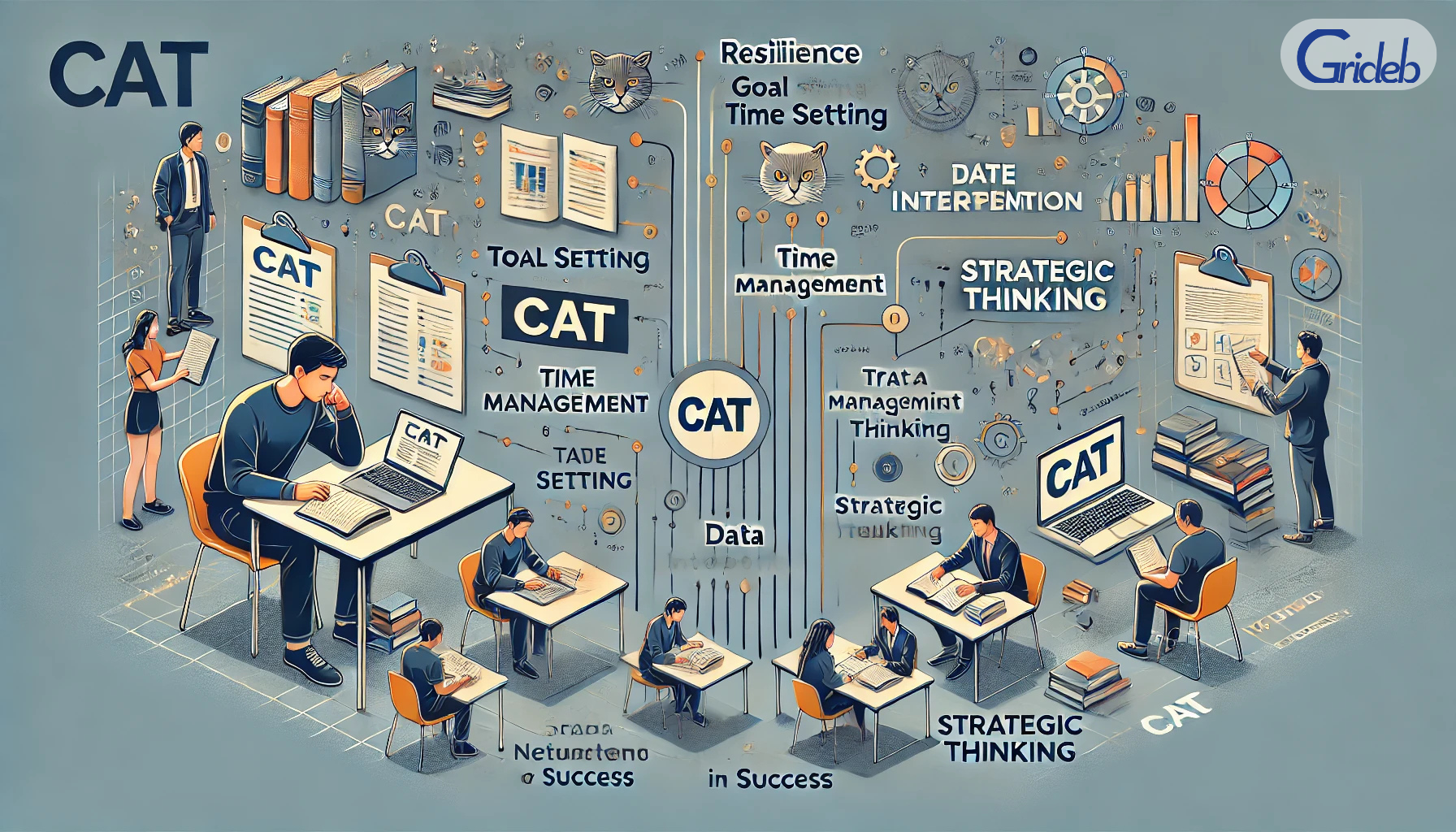What the CAT Exam Can Teach Us About Success in the MLM Industry

What the CAT Exam Can Teach Us About Success in the MLM Industry
The Common Admission Test (CAT) is one of the most challenging exams in India, with only a small percentage of candidates achieving top scores. Its rigorous preparation and competitive nature are surprisingly aligned with the qualities needed to thrive in multi-level marketing (MLM). From resilience to strategic thinking, CAT preparation provides valuable insights that can be applied to MLM success. Let’s explore these lessons, supported by some compelling facts and figures.
1. Cultivating a Competitive Mindset and Resilience
The road to CAT success demands persistence. In 2023, over 2.3 lakh students registered for CAT, yet only a small fraction, around 2%, achieved the high scores needed for top B-school admissions. Similarly, resilience is essential in MLM, where about 90% of participants exit within the first year due to lack of success. Like CAT, MLM success belongs to the resilient few who learn to thrive despite challenges and low odds.
2. Goal-Oriented Preparation
CAT preparation is heavily goal-oriented, requiring candidates to master sections in quantitative, verbal, and data interpretation skills. Many aspirants devote 4-6 hours daily to structured study schedules, with clear objectives to achieve mastery over each section. This dedication to targeted goals is mirrored in MLM, where participants benefit from setting specific targets, like monthly customer acquisition or team-building milestones. Goal-setting provides both CAT aspirants and MLM professionals with a roadmap to sustained growth and motivation.
3. Strategic Planning and Decision-Making
CAT candidates must plan carefully, deciding which questions to prioritize for optimal scoring. Time allocation is crucial, and the ability to make quick, strategic choices under pressure becomes a valuable asset. MLM professionals similarly need strategic planning, especially in areas like recruitment and sales. For instance, successful MLM teams often prioritize high-demand products or focus on building customer loyalty. Strategic thinking, as in CAT, can help MLM professionals make better use of their time and resources to achieve lasting success.
4. Mastering Data Interpretation
Data interpretation and logical reasoning are core CAT components, with around 60% of candidates in 2022 identifying data interpretation as their most challenging section. Mastering data analysis is equally important in MLM, where understanding sales patterns, customer demographics, and network growth helps optimize business strategies. Studies reveal that MLM leaders who leverage data insights to guide decisions tend to perform up to 30% better. Analytical skills gained from CAT prep can thus empower MLM participants to make data-driven decisions for growth.
5. Building a Personal Brand and Presentation Skills
CAT candidates face not only a written test but also interviews and group discussions, where communication skills and presentation are crucial. In MLM, personal branding and effective communication are also vital, as success often depends on inspiring and building trust within a network. Research shows that 70% of MLM customers base their trust on a well-presented leader, underscoring the importance of personal branding. CAT’s focus on communication skills can help MLM professionals connect more effectively with customers and recruits.
6. Time Management and Consistency
With just three hours to complete the CAT, candidates must learn to maximize efficiency. Mock tests and timed practice sessions are commonly used to build time management skills. In MLM, consistent and efficient use of time is equally critical for building a sustainable business. Surveys indicate that MLM participants who dedicate 10-15 hours weekly see 25-30% better income than those who treat it passively. Both CAT and MLM emphasize that disciplined time management is a key ingredient for success.
7. Networking Skills
Networking is another crucial aspect for CAT aspirants, who often connect with alumni, mentors, and peers for guidance. In MLM, personal networks are essential for expanding a business and finding mentorship. Research suggests that MLM participants with strong networks are twice as likely to succeed compared to those without support. By learning from CAT alumni networks, MLM participants can see how mentorship and collaboration accelerate growth.
8. Embracing Risk-Taking and Adaptability
CAT requires calculated risks, as candidates must decide which sections or questions to prioritize. In MLM, calculated risks are necessary for expanding reach and adapting to market trends. Statistics show that risk-takers in MLM earn up to 50% more than those who avoid innovation. Like CAT aspirants who navigate uncertainties, MLM professionals can benefit from staying flexible and open to new strategies.
9. Understanding the Odds of Success
The competition in CAT is intense; only about 20% of test-takers gain entry to a top-tier management program. Similarly, only around 10% of MLM participants earn significant income, and roughly 1% reach top income levels. In both fields, understanding these odds encourages a strategic mindset. Success in CAT and MLM doesn’t come easily but is achievable with realistic planning and hard work.
Conclusion
Though CAT and MLM may seem worlds apart, the preparation for CAT teaches skills that directly apply to success in MLM. Resilience, goal-setting, time management, and strategic thinking are essential in both paths, proving that ambition coupled with disciplined effort can turn challenges into opportunities. Whether striving to score high in CAT or to succeed in MLM, these universal qualities are the building blocks of success.